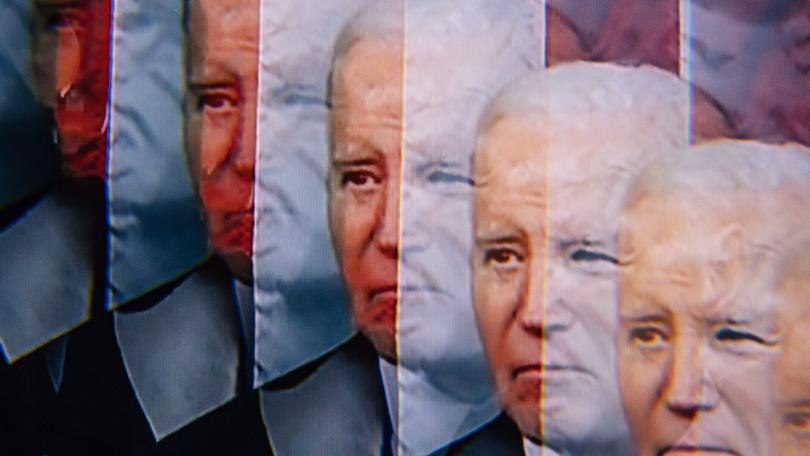Why it’s hard to explain Joe Biden’s unpopularity

Joe Biden is one of the most unpopular presidents in modern American history. In Gallup polling, his approval ratings are lower than those of any president embarking on a reelection campaign, from Dwight Eisenhower to Donald Trump.
Yet an air of mystery hangs around his lousy polling numbers. As The Washington Free Beacon’s Joe Simonson noted recently, just surfing around most U.S. media and pop culture, you probably wouldn’t realize that Biden’s job approval ratings are quite so historically terrible, worse by far than Trump’s at the same point in his first term.
Apart from anxiety about his age, there isn’t a chattering-class consensus or common shorthand for why his presidency is such a political flop. Which is why, perhaps, there was a rush to declare his State of the Union address a rip-roaring success, as though all Biden needs to do to right things is to talk loudly through more than an hour of prepared remarks.
Sign up to The Nightly's newsletters.
Get the first look at the digital newspaper, curated daily stories and breaking headlines delivered to your inbox.
By continuing you agree to our Terms and Privacy Policy.When things went south for other recent chief executives, there was usually a clearer theory of what was happening. Trump’s unpopularity was understood to reflect his chaos and craziness and authoritarian forays. The story of George W. Bush’s descending polls was all about Iraq and Hurricane Katrina. When Barack Obama was at his polling nadir, most observers blamed the unemployment rate and the Obamacare backlash, and when Bill Clinton struggled through his first two years, there was a clear media narrative about his lack of discipline and White House scandals.
With Biden, it has been different. Attempts to reduce his struggles to the inflation rate are usually met with vehement rebuttals, there’s a strong market for “bad vibes” explanations of his troubles, a lot of blame gets placed on partisan polarization even though Biden won a clear popular majority not so long ago, and even the age issue has taken center stage only in the past few months.
Some of this mystification reflects liberal media bias accentuated by contemporary conditions — an unwillingness to look closely at issues like immigration and the border, a hesitation to speak ill of a president who’s the only bulwark against Trumpism.
But I experience some mystification myself. I think that Biden’s record has big problems and that the economy isn’t as golden as some of his defenders claim. But even I look at his numbers and think really, that bad?
I also think, though, that this kind of media mystification is what you’d expect given the political realignment we’re experiencing, where right and left are sorting increasingly by class and education, and where anti-institutionalism has migrated more to the political right.
This transformation means that the Republican voters whose support Biden never had are often more culturally distant from liberal tastemakers than were the Republicans of the Clinton or Obama years. But it also means that many of the voters Biden is losing now, the swing voters driving his approval ratings down and down, are likewise fairly alien to the cultural and media establishment.
Some of them are the sort of disillusioned and infrequent voters whose grievances tend to be harder to pin down. But many are politically moderate minority voters, especially lower-middle-class Hispanics and African Americans, who already tended somewhat rightward in 2016 and 2020 but now seem to be abandoning Biden in larger numbers.
In a recent Substack post, Ruy Teixeira described the realignment since 2012: “In that election, Obama carried nonwhite working-class (noncollege) voters by a massive 67 points, while losing white college graduates by seven points.” Whereas today, “Biden is actually doing worse among the nonwhite working class, carrying them by a mere six points, than among white college graduates, where he enjoys a 15 point advantage over Trump.”
In theory, the recent push for racial representation in elite America should have made the establishment more attuned to the concerns of nonwhite voters. But in practice, this push tended to treat representation and progressive politics as a package deal, making nonwhites with moderate to conservative views more exotic, not less — as mystifying, in a way, as any MAGA-hat-wearing white guy in a rural diner.
Again, I’m part of that establishment, and I don’t want to pretend that I have my finger fully on the pulse of, say, blue-collar Hispanics who went for Biden in 2020 but now lean toward Trump.
But if you take that kind of constituency as a starting place, you may be able to reason your way to a clearer understanding of Biden’s troubles: by thinking about ways in which high borrowing costs for homes and cars seem especially punishing to voters trying to move up the economic ladder, for instance, or how the hold of cultural progressivism over Democratic politics might be pushing more culturally conservative minorities to the right even if wokeness has peaked in some elite settings.
These are theories; maybe there’s a better one. But the first step to saving Biden’s reelection effort is to acknowledge the need for such an explanation — because unpopularity that you can’t fathom can still throw you out of office.
This article originally appeared in The New York Times.
© 2024 The New York Times Company
Originally published on The New York Times
